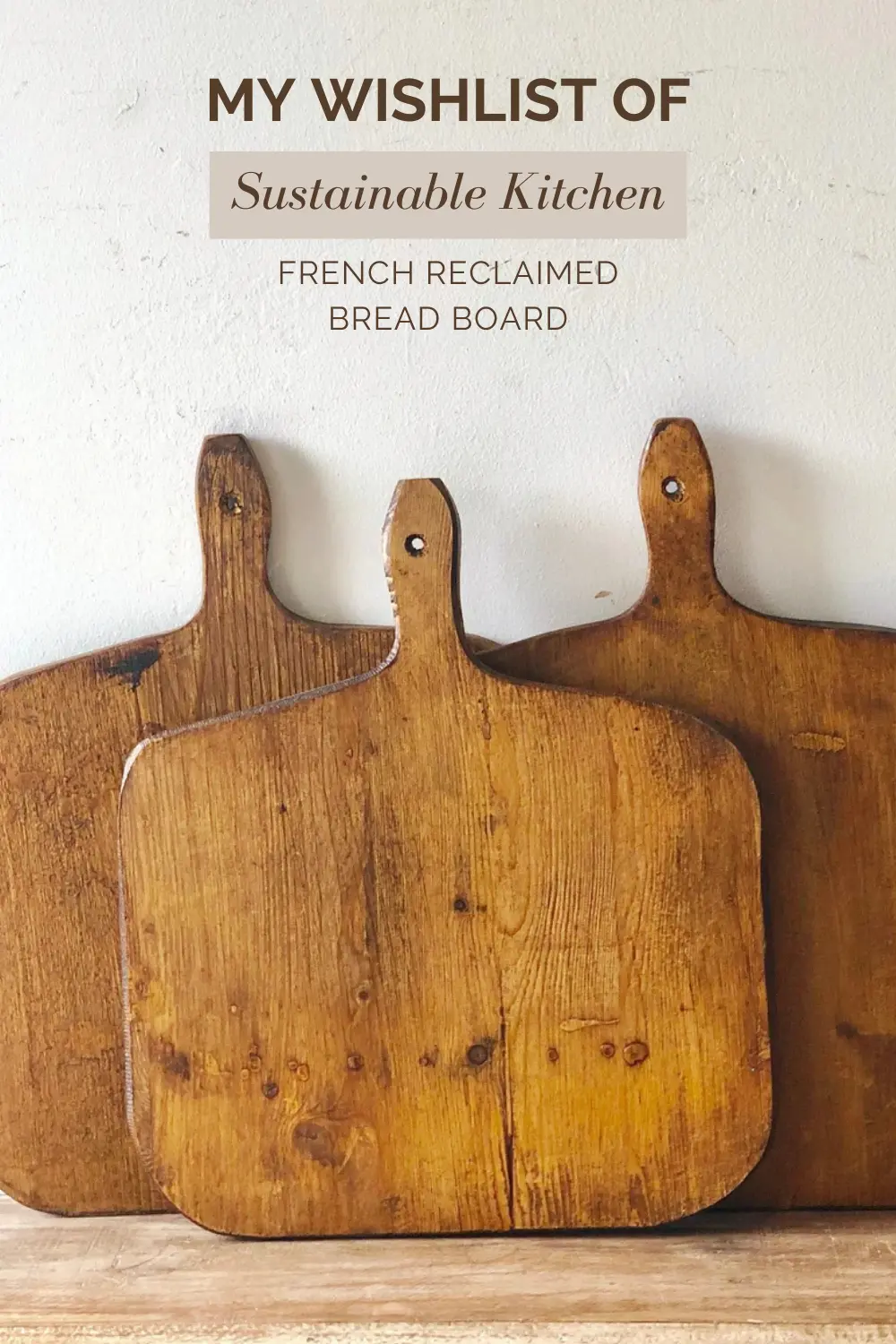Save this for Later
Surprisingly, the EPA estimates that you spend a whopping 87% of your time indoors, making your eco friendly household choices more important than ever for your health and the planet. The air quality inside your home directly impacts your wellbeing, while your daily habits affect the environment in significant ways.
In fact, the impact of household decisions extends beyond just air quality. Approximately 35% of the U.S. food supply ends up in landfills, contributing to 6% of global greenhouse gas emissions. Your heating choices also matter considerably, accounting for 13-14% of total carbon emissions. Fortunately, transitioning to an eco friendly lifestyle doesn't require radical changes, small, room-by-room adjustments can make a substantial difference. From switching to Energy Star appliances that reduce energy use by 10-50%, to adopting water-saving practices that cut down on the 82 gallons an average American uses daily, environmentally friendly alternatives exist for nearly every aspect of home life.
Throughout this guide, you'll discover practical ways to transform each area of your home with eco friendly household products and sustainable practices that benefit both your living space and the planet.
Start with Daily Habits That Save Energy
Making your home more energy efficient starts with simple daily habits that collectively create significant impact. The Department of Energy estimates that homeowners can save between $100 and $200 annually just by unplugging devices not in use. studies show that standby power consumption accounts for approximately 10% of a household's total energy use.
Turn off unused devices and lights
Those seemingly innocent electronic devices quietly sipping electricity when not in use are often called "energy vampires." Even your phone charger consumes 0.26 watts when no phone is connected, jumping to 2.24 watts when a fully charged phone remains plugged in.
To combat this phantom power drain:
- Unplug small appliances like toasters, coffee makers, and hair dryers when not in use
- Use smart power strips for entertainment setups (TV, cable box, game consoles)
- Set computers to sleep mode after 10-15 minutes of inactivity
Simply replacing your five most used light fixtures with ENERGY STAR certified LED bulbs can save about $40 annually. These bulbs use up to 90% less energy and last 15 times longer than standard bulbs.
Use eco friendly household appliances
Upgrading to energy efficient appliances represents one of the most effective ways to reduce your household's ecological footprint. ENERGY STAR certified appliances meet strict efficiency specifications set by the US Environmental Protection Agency.
Consider these energy saving options:
- ENERGY STAR dishwashers use less water while cleaning just as effectively
- Heat pump water heaters can save an average family of four $550 annually when replacing electric resistance models
- Smart thermostats can reduce heating and cooling bills by more than 8%, saving approximately $50 yearly
Additionally, running appliances at full capacity maximizes efficiency—washing full loads can save over 3,400 gallons of water annually.
Insulate your home to reduce heating needs
Given that heating and cooling account for nearly 50% of yearly energy costs, proper insulation deserves attention. The US Department of Energy reports that adding appropriate insulation can save homeowners an average of 15% on electricity bills.
Sealing air leaks around your home and adding insulation can provide up to 10% savings on annual energy bills. Simple fixes include installing weatherstripping on doors and caulking around windows.
Beyond energy savings, proper insulation offers additional benefits like reduced outside noise, better humidity control, and fewer pollutants entering your home.
Eco-Friendly Kitchen Upgrades
Your kitchen offers numerous opportunities for sustainable improvements with minimal effort. From waste management to cooking methods, simple changes can significantly reduce your environmental footprint while creating a healthier space for your family.
Compost food scraps and reduce packaging
Food waste and scraps don't need to end up in landfills where they contribute to methane emissions. Start a kitchen compost bin for fruit and vegetable peels, coffee grounds, eggshells, and other biodegradable materials. These organic materials make excellent fertilizer for gardens and houseplants. According to EPA data, food scraps and yard waste currently make up 20-30% of what we throw away.
Instead of using plastic containers, opt for sustainable alternatives like glass jars or stainless steel containers that last longer and don't leach chemicals into food. Moreover, consider purchasing food in bulk using your own reusable containers. This significantly reduces packaging waste while saving money.
Cook in bulk and use energy saving tools
Batch cooking is both time saving and energy efficient. When you fill your oven while cooking large batches, you're using space and heat more efficiently. This practice reduces the frequency of cooking and the energy associated with multiple meal preparations.
Consider using smaller appliances whenever possible. Slow cookers use around 250 watts per use compared to standard ovens that consume between 2,000-5,000 watts. Similarly, air fryers, pressure cookers, and toaster ovens use approximately half the energy of conventional ovens.
For appliance upgrades, look for models with high Energy Star ratings and water-saving features. Induction cooktops are particularly efficient as they heat cookware directly, reducing energy waste and enhancing safety.
Avoid single-use plastics and coffee pods
Single-use coffee pods create staggering waste—in 2014, enough K-Cups were sold that if placed end-to-end, they would circle the globe 10.5 times. Almost all end up in landfills since they aren't truly recyclable despite manufacturer claims.
Instead, choose reusable alternatives:
- Replace plastic wrap with beeswax wraps or silicone food covers
- Use cloth or mesh bags for produce shopping
- Switch to stainless steel or glass straws instead of plastic
- Consider French press coffee makers that use less energy and produce zero waste
By implementing these eco-friendly kitchen upgrades, you'll not only reduce household waste but also save money while creating a healthier, more sustainable living space.

Checkout our recommendations My Wishlist for Sustainable Kitchen Refresh
Sustainable Bathroom and Laundry Practices
Your bathroom and laundry areas consume a substantial portion of household resources, with bathrooms accounting for 30-40% of your home's water usage. Fortunately, these spaces offer excellent opportunities for eco-friendly improvements that benefit both your wallet and the environment.
Switch to eco friendly household cleaners
Many conventional cleaning products contain chemicals that can cause skin irritation, respiratory problems, and even contribute to water pollution when rinsed down drains. Choosing eco-friendly alternatives protects your family's health while reducing environmental impact.
Look for cleaners that are:
- Non-toxic and biodegradable
- Phosphate-free with natural fragrances
- Packaged in recycled content containers
You can also create effective cleaning solutions using common household ingredients like vinegar, lemon juice, and hydrogen peroxide. These natural alternatives clean effectively without introducing harmful chemicals into your home environment.
Use water-saving fixtures
Replacing old bathroom fixtures with water-efficient models offers impressive resource savings. WaterSense labeled bathroom faucets use a maximum of 1.5 gallons per minute—30% less than standard 2.2 GPM models. These upgrades can save the average family 700 gallons annually, equivalent to 45 showers worth of water.
Modern toilets have also evolved considerably. While older toilets use about 3.5 gallons per flush, high-efficiency models require less than 1.28 gallons. This seemingly small difference adds up to over 1,000 gallons saved yearly.
Wash clothes in cold water and air dry
Cold water washing represents one of the simplest yet most impactful eco-friendly household changes. Approximately 75-90% of your washing machine's energy goes toward heating water. Switching to cold water could eliminate around 1,600 pounds of carbon dioxide emissions annually per household.
Beyond energy savings, cold water washing offers additional benefits:
- Reduces clothing shrinkage and fading
- Decreases wrinkles and fabric wear
- Extends the lifespan of your garments
Consider air-drying laundry instead of using a dryer. This practice can save between $256-$590 annually on energy bills. Additionally, sun exposure naturally disinfects and whitens fabrics while protecting your clothes from dryer related wear and tear.
Green Living Spaces and Smart Storage
Beyond functional spaces, your living areas serve as personal sanctuaries where design choices significantly impact both wellbeing and environmental footprint. Living rooms have become central to the growing commitment toward sustainability, with consumers increasingly prioritizing decor that minimizes carbon footprints while maintaining style.
Use plants to purify indoor air
Indoor plants do more than just enhance esthetics—they actively improve air quality by removing harmful toxins. According to NASA research, certain plants excel at filtering common pollutants from your home environment. For maximum air-purifying benefits, consider adding:
- Rubber Plant: Especially effective at removing formaldehyde, thrives in filtered light and needs watering only every 1-2 weeks
- Peace Lily: Removes ammonia, trichloroethylene, benzene, formaldehyde, and xylene, making it one of the top three plants for eliminating household toxins
- Pothos: Tolerates lower light conditions while effectively removing multiple indoor toxins—one of the easiest houseplants to maintain

Checkout our recommendations My 15 Best-Find of Air Planter for Natural Air Purifying
Choose sustainable furniture and decor
Furniture production often involves natural resources like wood, which when mass-produced contributes to deforestation and greenhouse emissions. Alternatively, sustainable furniture typically uses eco-friendly materials that limit sourcing new materials. Look for pieces made from:
- Reclaimed wood or FSC-certified oak/walnut
- Recycled metals and organic fabrics
- Bamboo and cork
Indeed, many high-quality sustainable brands provide transparency about their materials and manufacturing processes. Although eco-friendly furniture might have higher upfront costs, these pieces typically last for decades rather than seasons—making them cost-effective long-term investments.

Checkout our recommendations My Next-to-Buy List of Natural Bamboo Organizer / Shelves
Declutter and donate unused items
Sustainable decluttering involves thoughtfully reducing possessions without unnecessarily contributing to landfills. When deciding what to keep, ask yourself if items truly add value to your life.
For things you no longer need:
- Donate furniture and household goods to organizations like Habitat ReStores, which diverts hundreds of tons from landfills yearly
- Offer items through platforms like Buy Nothing groups, Facebook Marketplace, or Freecycle to give them a second life
- Consider if items can be repurposed—old towels and bedding can benefit animal shelters
Essentially, maintaining an organized, decluttered space makes finding items easier while minimizing unnecessary future purchases—creating a more environmentally conscious household.
Conclusion
Transforming your home into an eco-friendly sanctuary doesn't require massive lifestyle overhauls. Rather, the room-by-room approach outlined above makes sustainable living both achievable and rewarding. Each small change—from unplugging unused devices to choosing air-purifying houseplants—contributes significantly to reducing your environmental footprint.
Consider the cumulative impact of these adjustments. Switching to LED bulbs alone saves approximately $40 annually while using 90% less energy. Additionally, cold-water laundry washing eliminates about 1,600 pounds of carbon dioxide emissions per year from your household. These numbers multiply across each eco-conscious decision you make.
Most eco-friendly household changes offer dual benefits. Water-saving fixtures reduce both utility bills and resource consumption. Similarly, decluttering prevents unnecessary purchases while keeping items out of landfills. Energy-efficient appliances consume fewer resources while performing better than their conventional counterparts.
Your journey toward sustainability matters more than perfection. Start with changes that feel manageable—perhaps composting kitchen scraps or replacing cleaning products with non-toxic alternatives. Eventually, these practices become automatic habits that benefit both your living environment and the wider world.
Ultimately, creating an eco-friendly household represents a powerful way to take personal action against larger environmental challenges. The choices you make within your home ripple outward, inspiring others and collectively contributing to meaningful change. Through thoughtful consumption, energy conservation, and waste reduction, you help create a more sustainable future—one room at a time.
FAQs
Q1. What are some simple ways to make my home more energy-efficient?
You can start by unplugging devices when not in use, switching to LED bulbs, and using smart power strips. These small changes can lead to significant energy savings and reduce your carbon footprint.
Q2. How can I make my kitchen more eco-friendly?
Consider composting food scraps, using reusable containers instead of single-use plastics, and cooking in bulk to save energy. Also, opt for energy-efficient appliances and avoid single-use coffee pods.
Q3. What are some sustainable practices for the bathroom and laundry?
Use water-saving fixtures, switch to eco-friendly cleaning products, wash clothes in cold water, and air dry laundry when possible. These practices can significantly reduce water and energy consumption.
Q4. How can plants improve my home's environment?
Indoor plants like rubber plants, peace lilies, and pothos can effectively purify air by removing common pollutants. They not only enhance esthetics but also contribute to a healthier living space.
Q5. What should I consider when choosing sustainable furniture?
Look for furniture made from reclaimed wood, FSC-certified materials, recycled metals, or sustainable materials like bamboo and cork. While these options might be pricier initially, they often last longer and have a lower environmental impact.